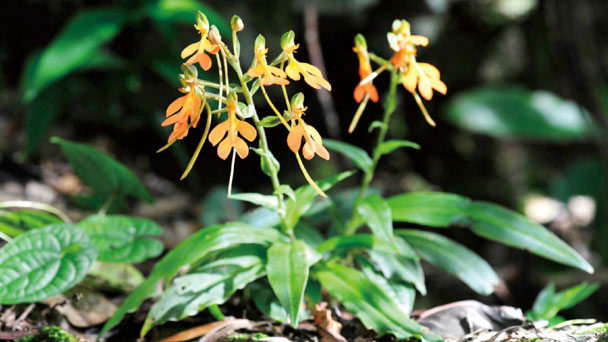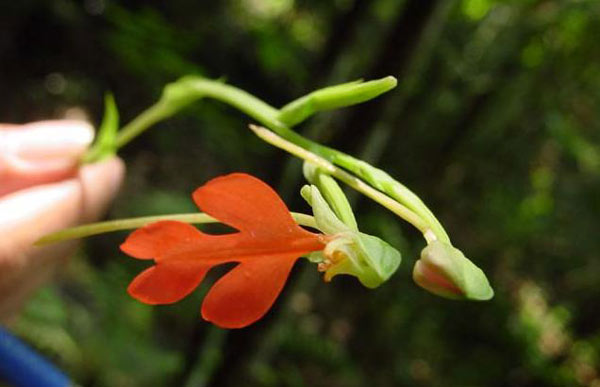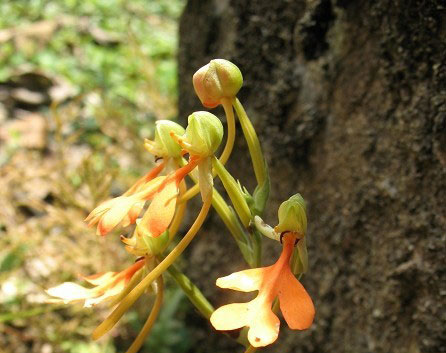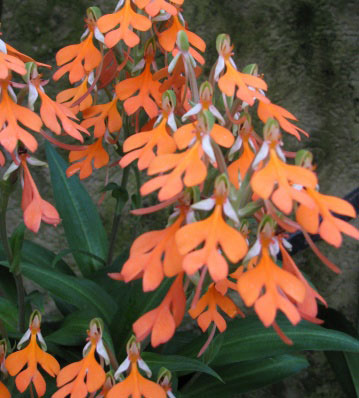Echeveria Imbricata (Blue Rose Echeveria) Profile
Written by Iris
Nov 03 2021

Echeveria Imbricata is a densely clustered species. Thin gray-green leaves of Echeveria imbricata are tightly packed with a pointed tip and orange edges. Orange-red and yellow flowers develop on loose stems in spring. Echeveria imbricata is one of the most popular and widely planted e Cheverias in potted and rock gardens.

As “Blue Rose” grows, the older leaves towards the bottom of the stem dry up, with healthy, newer leaves forming at the top. The leaves are covered by a powder, protecting the succulent from sun damage.
Carefully detach a small rosette from the stem.
Then, fill a small nursery pot with adequate substrate (soil mix, sand and compost).
Mark a hole with your fingers.
Delicately place the rosette.
Finally, press the soil down around the buried stem of the small rosette.
Steps for Echeveria Imbricata Propagation with Leaves
Carefully remove a few leaves, close to the stem. Place them in a dish on top of a layer of soil, and water lightly every few days. As soon as they start sprouting shoots, they can be planted in a pot of soil.

Treat aphids and mealybugs with insecticides like neem oil. Spraying the Echeveria with cold water to remove the aphids isn't recommended. The water may collect inside the rosettes and lead to overwatering.
entury Plant (Agave)
Ice Plant (Delosperma)
Blue Fescue (Festuca glauca)
Kalanchoe (Kalanchoe)
Bottlebrush (Callistemon)
Read Next:
Echeveria Elegans Mexican Snowballs Care & Growing Guide
Echeveria Laui (Echeveria Succulent) Care Guide
Echeveria Agavoides Care & Propagation
Echeveria Pulvinata (Chenille Plant) Care & Propagation Guide
Echeveria Nodulosa (Painted Echeveria) Care Guide
Echeveria Imbricata (Blue Rose Echeveria) Grow & Care Guide
Echeveria Setosa: Grow & Care for Mexican Firecracker
Echeveria Black Prince Succulent Grow & Care Guide
Echeveria Runyonii Topsy Turvy Grow & Care Guide
Echeveria Takasago No Okina Care Guide
Echeveria Mebina Care Guide
Echeveria Imbricata PictureEcheveria Imbricata InfoEcheveria Imbricata Native HabitsEcheveria Imbricata DistributionHow to Grow & Care for Echeveria ImbricataHow to Grow Echeveria ImbricataHow to Care for Echeveria ImbricataEcheveria Imbricata Common Pests/DiseasesEcheveria Imbricata Companion Plants
Echeveria Imbricata Picture

Echeveria Imbricata Info
| Botanical Name | Echeveria imbricata |
| Common Name | Blue Rose Echeveria |
| Plant Type | Succulent |
| Mature Size | 6 inches tall, 7 inches wide |
| Sun Exposure | Full to partial sun |
| Soil Type | Sandy, well-draining |
| Soil pH | Acidic |
| Bloom Time | Winter, spring |
Echeveria Imbricata Native Habits
“Blue Rose” is popular among succulent lovers, and is one of the most common Echeverias you can find. It is one of the oldest Echeveria hybrids that is documented, being a combination of Echeveria glauca and Echeveria metallica.As “Blue Rose” grows, the older leaves towards the bottom of the stem dry up, with healthy, newer leaves forming at the top. The leaves are covered by a powder, protecting the succulent from sun damage.
Echeveria Imbricata Distribution
Echeveria imbricata ‘Blue Rose’ is known to be a hybrid that comes from crossing echeveria secunda with Echeveria Gibbiflora ‘Metallica’
How to Grow & Care for Echeveria Imbricata
How to Grow Echeveria Imbricata
- With Seeds
- With Stem Cuttings
Carefully detach a small rosette from the stem.
Then, fill a small nursery pot with adequate substrate (soil mix, sand and compost).
Mark a hole with your fingers.
Delicately place the rosette.
Finally, press the soil down around the buried stem of the small rosette.
Steps for Echeveria Imbricata Propagation with Leaves
Carefully remove a few leaves, close to the stem. Place them in a dish on top of a layer of soil, and water lightly every few days. As soon as they start sprouting shoots, they can be planted in a pot of soil.
- With Offsets

How to Care for Echeveria Imbricata
- Light
- Soil
- Water
- Temperature and Humidity
- Fertilizer

Echeveria Imbricata Common Pests/Diseases
The Echeveria imbricata blue rose succulent is considered a disease-free plant and doesn't have any major disease issues. However, it's still important to watch for the usual pests, including aphids and mealybugs.Treat aphids and mealybugs with insecticides like neem oil. Spraying the Echeveria with cold water to remove the aphids isn't recommended. The water may collect inside the rosettes and lead to overwatering.
Echeveria Imbricata Companion Plants
The echeveria imbricata is the perfect addition to any rock garden or a succulent garden. Good companion plants are the followings:entury Plant (Agave)
Ice Plant (Delosperma)
Blue Fescue (Festuca glauca)
Kalanchoe (Kalanchoe)
Bottlebrush (Callistemon)
Read Next:
Echeveria Elegans Mexican Snowballs Care & Growing Guide
Echeveria Laui (Echeveria Succulent) Care Guide
Echeveria Agavoides Care & Propagation
Echeveria Pulvinata (Chenille Plant) Care & Propagation Guide
Echeveria Nodulosa (Painted Echeveria) Care Guide
Echeveria Imbricata (Blue Rose Echeveria) Grow & Care Guide
Echeveria Setosa: Grow & Care for Mexican Firecracker
Echeveria Black Prince Succulent Grow & Care Guide
Echeveria Runyonii Topsy Turvy Grow & Care Guide
Echeveria Takasago No Okina Care Guide
Echeveria Mebina Care Guide
Latest Updated
- Benefits of Bugleweed - 7 Science-backed Health Benefits
- Bugleweed Dangers & Side Effects - Is It Poisonous?
- How to Plant Evergreen Trees - What You Should Know
- When to Plant Evergreens - Grow Guide for Evergreen Trees
- 12 Wonderful Evergreen Shrubs for Your Garden
- 12 Popular Evergreen Plants with Pictures for Beginners
- When And How To Prune A Lilac Bush Like a Pro
- How to Grow & Care for Lilac Vine (Hardenbergia Violacea)
- Japanese Lilac Tree (Syringa Reticulata) Care & Propagation Guide
- Shumard Oak Pros and Cons - What to Know
Popular Articles
- Winter maintenance of Antirrhinum Majus
- How to Grow Terminalia Mantaly Tree
- How to Grow and Care for Crossostephium Chinense
- How to grow Antirrhinum Majus in spring
- Peristeria Elata (Dove Orchid) Profile: Info & Care Guide
- Underwatered Snake Plant (Sansevieria Trifasciata) - Signs And How To Fix
- How to Care for Brazilian Jasmine Plant (Mandevilla Sanderi)
- How to Grow & Care for Graptopetalum Purple Delight in Summer
- Rosa Chinensis (China Rose): Plant Growing & Care Tips
- How to Care for Baby Sun Rose (Aptenia Cordifolia)